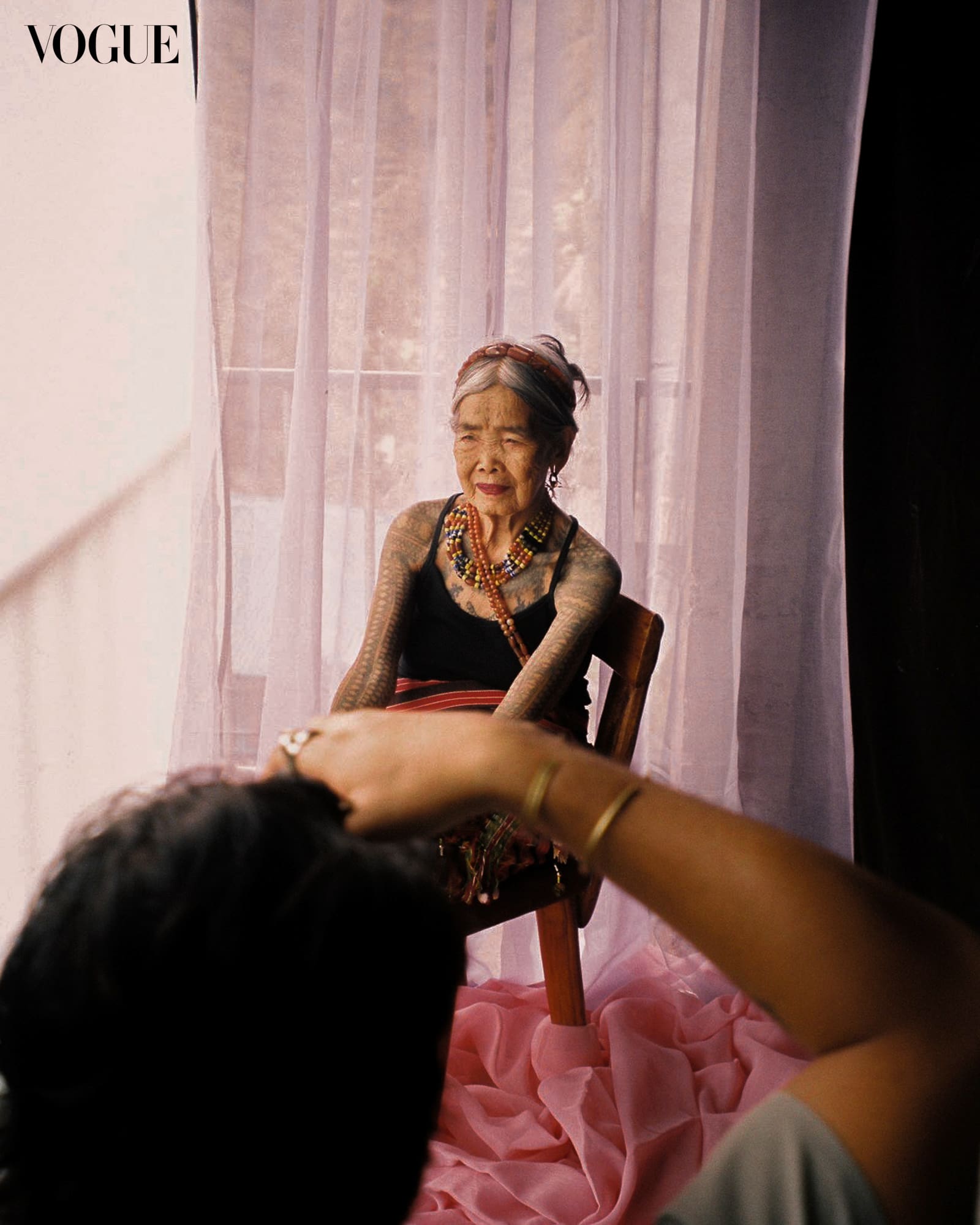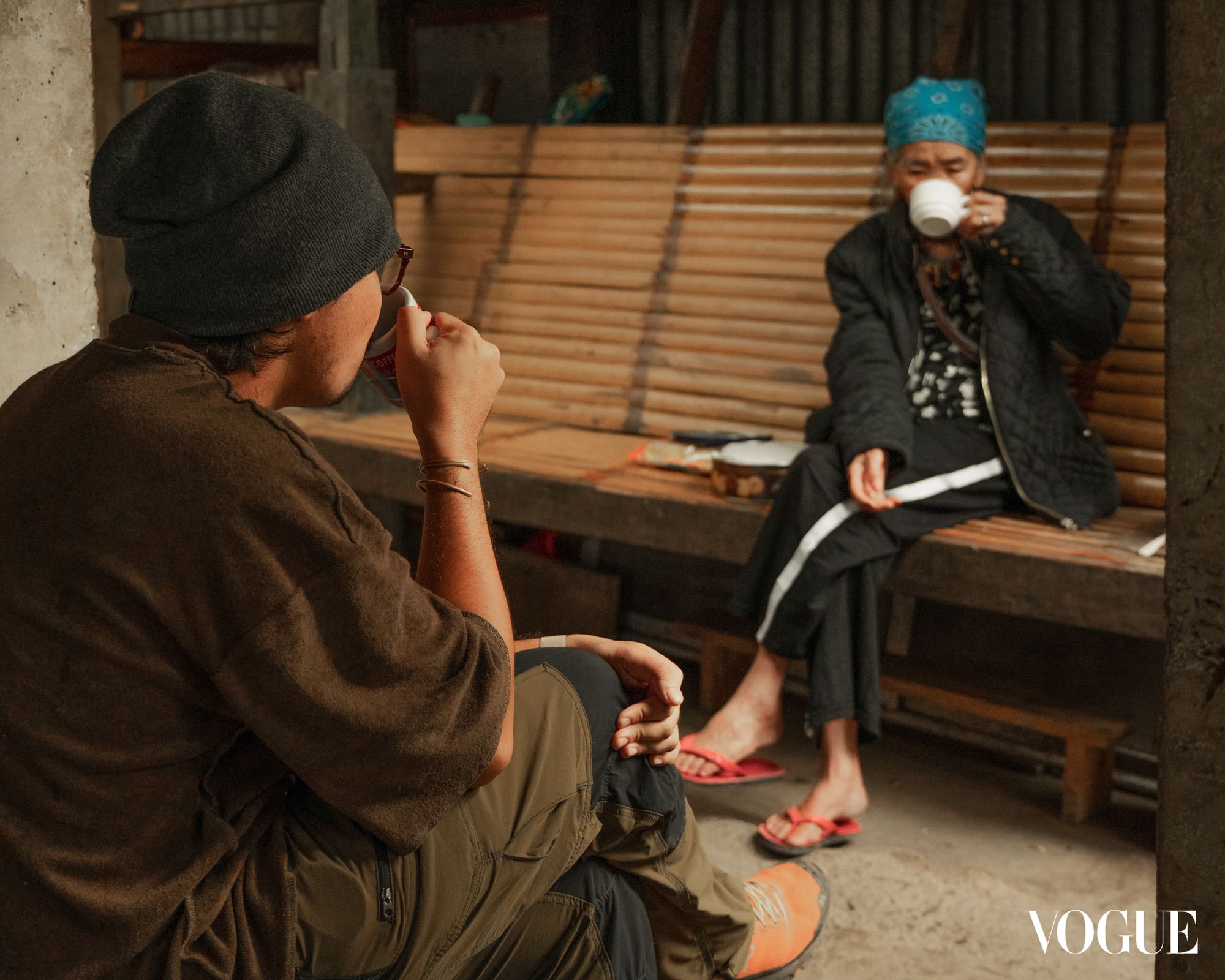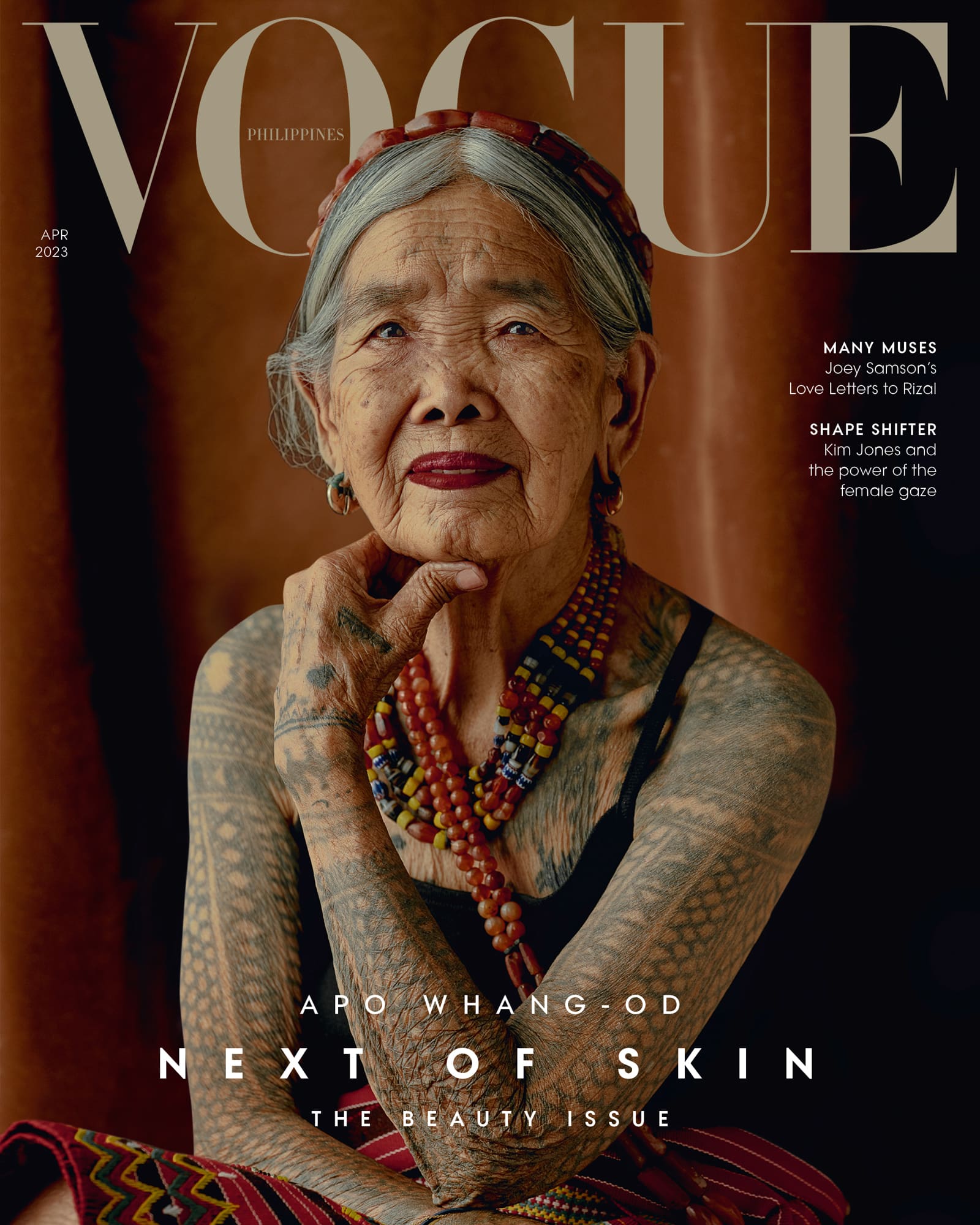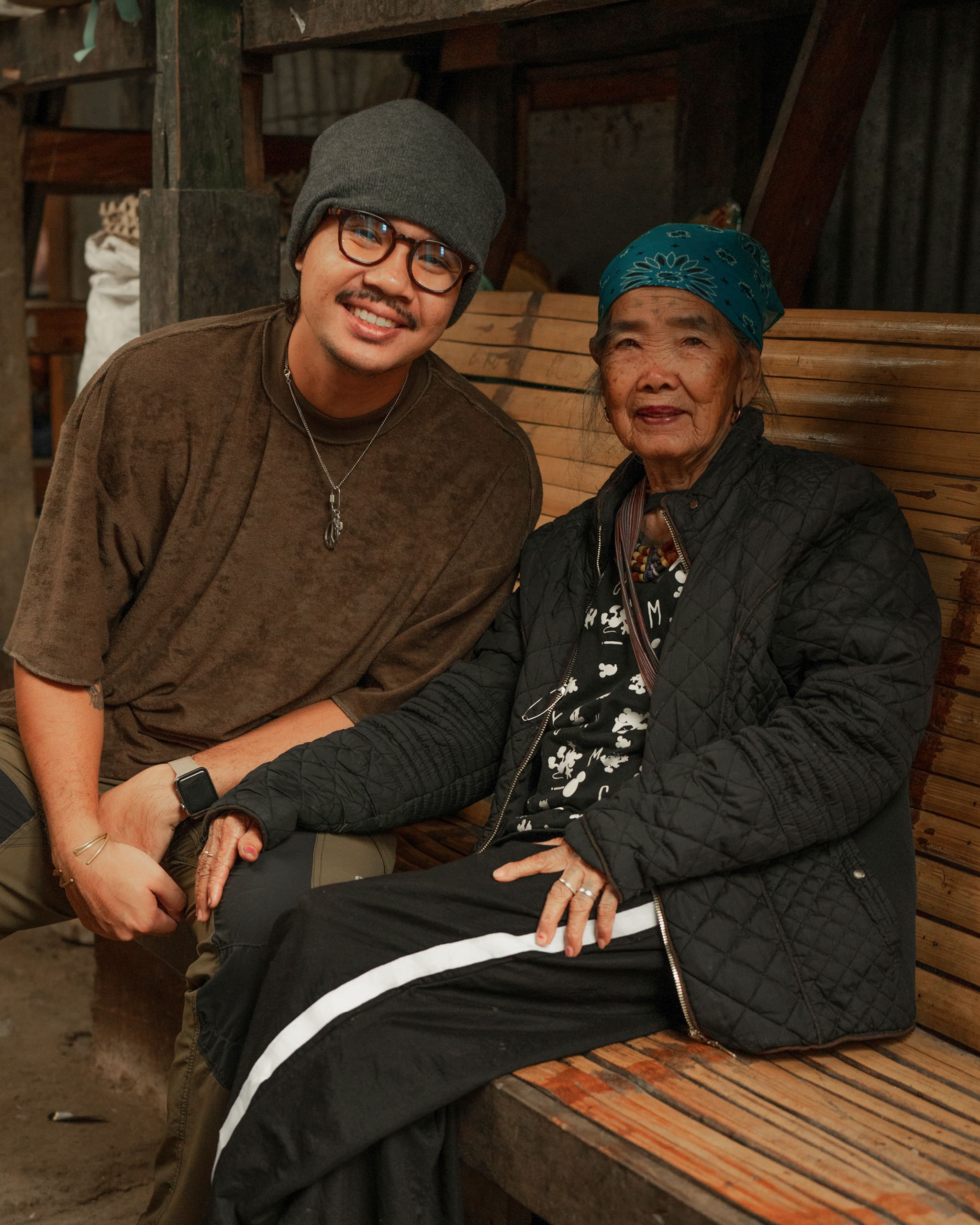Photo by Sela Gonzales
Photographing Apo Whang-Od enabled him to dig deeper into his own experiences and weave a personal narrative into the Vogue Philippine’s cover.
Every photo tells a story. This holds true for Filipino photographer Artu Nepomuceno who has been telling stories through his lens for the past decade. An industry go-to for his breathtaking portraits and stunning photography, Artu is not new to shooting covers for some of the biggest local and international publications. He has worked alongside globally acclaimed photographers like Sharif Hamza (who shot the covers for Vogue Philippines’ maiden issue) and has contributed to the December 2022 and March 2023 issues.
Together with the Vogue Philippines team, Artu traveled to the remote village of Buscalan in the municipality of Tinglayan, Kalinga, in December of 2022. Home to the Butbut tribe, the village has become synonymous with the world’s oldest living mambabatok (traditional tattoo artist), Apo Whang-Od, also known as Maria Oggay. Whang-Od, a true embodiment of strength and beauty, graces this month’s Vogue Philippines cover. Through her story, Artu discovers much more about himself and how Whang-Od represents a renewed pride in pre-colonial Filipino identity.
It was an emotional journey for Artu, and photographing Whang-Od meant more to him than he realized. He began by sharing how he first heard of her through one of his closest friends, whose goal was to get tattooed by her one day. Almost a decade later, his friend passed away from cancer, which was one of the most crushing experiences he’s had to go through. For Artu, shooting Whang-Od felt like a “sudden opportunity to have that special moment with one of my closest friends… if it weren’t for him, I wouldn’t actually have known about her so long ago.” He shares that his friend was always in the back of his mind throughout the whole process.
Fueled by a mélange of pain, inspiration, and treasured memories, Artu finally got to immerse himself in Whang-Od’s traditions and culture, diving into what she’s known for, the practice of batok. A centuries-old technique, batok makes use of a soot-soaked thorn attached to a bamboo stick to tap permanent tribal symbols onto the skin. Traditionally used to mark warriors for battle or to encourage female fertility, visitors today can choose from a range of pre-selected designs, while the most sacred symbols remain out of reach to outsiders. Grace and Elyang, the cousins and grand-nieces of Whang-Od, carry on the practice, while Whang-Od herself still tattoos her three signature dots at the request of visitors.
Over the years, Whang-Od has gained tremendous popularity, drawing visitors from across the globe to get her tattoos. Thankfully, the community around her as protective. “They police people who come in, they don’t stop them from coming in, but they really police if it feels abusive, or if it feels like they’re taking advantage of Whang Od…And if she’s tired, it’s done,” Artu says. “You can’t schedule your tattoo with her.”
Despite the renown surrounding Whang-Od, Artu recounts that the whole experience still felt authentic. He went into the shoot understanding and respecting her value and that of traditional tattooing. Beyond that, he chose not to research extensively before going to Buscalan.
Artu felt that intellectual approach to his subject was not right for him. “When you google the general keywords,” he says, “the first links you come across aren’t necessarily the history or the cultural references, it’s usually a press release or more popular clickbait articles, so I tried as much as possible to avoid that.”
Instead, Artu’s challenge was making his image as authentic and pure as possible. He decided to approach photographing Whang-Od like he was visiting his grandmother, whom he was very close to before she passed away. The eldest grandson from his generation, he described their relationship as “strong and beautiful.”
While she was still alive, Artu hadn’t begun his career as a photographer yet, so he thought, “How would I want to photograph my grandmother now if she was still around?” It was easy for him to translate his feelings for his grandmother into how he treated Whang-Od. “The respect that I carried in that space was just so delicate, and it was so careful,” he says.

The team worked around Apo Whang-Od, setting up backdrops and lights wherever she was comfortable. On the day of the shoot, the mountains were foggy. Still, Artu was more focused on building a comfortable relationship with the Butbut elder and capturing the most authentic image he could.
As the team set up minimal lights around her, his assistant photographer, Sela, who is from Baguio, could communicate and converse with Whang-Od. She was vital in the connection between Whang-Od and Artu, as she translated most of what he wanted to say. Artu was able to capture those intimate moments between Sela and Whang-Od. “Once in a while, she’d giggle, I wouldn’t really know why, but she’d just look at the camera and giggle, and there are some beautiful moments from there,” he remembers.
From the clothing to the makeup, Artu emphasizes that it was all her. “She entered the whole room already with her red lipstick…if you look closely at the photographs, the lipstick’s not perfect…and I think that’s what made it just very pure…when she comes like that, you don’t want to alter that definition, or how she feels, or how she wants to be seen as beautiful.” After their shoot, Whang-Od and her grand-nieces tattooed Artu and the team.
The experience of getting the tattoo from the mambabatok was painful. Whang-Od wasn’t delicate as she hammered the skin. “I think, honestly, it’s her having done these tattoos on warriors in history and people who can tolerate pain, who are trained to tolerate pain, so no matter how hard you hit, it doesn’t matter,” Artu says. “That’s part of the journey.”
For the photographer, his tattoos embody emotional pain. Representing the grief of losing his grandmother and his close friend, these markings are a culmination of difficult experiences. “This story is about life and death… did I transfer all of these emotions into these images…does it feel like the transfer of these emotions was authentic and with respect? I feel like I did.”
Getting a tattoo from the Butbut tribe has become an emblem of Filipino pride. Artu says it has “helped me carry this Filipino pride more authentically…for me, that’s saying I am proud to be a Filipino, to love everything about the Philippines, both the bad and the good.”
He hopes these images will continue to inspire interest in pre-colonial Filipino culture. “I just hope that these photographs will help expedite projects that focus on pre-colonial Filipino (culture) and the true deep meaning of traditional tattooing, how that practice should never die, how that practice should never be modernized, and how it should always carry its deep philosophies and meanings.”
Despite the Philippines’ violent past, the Butbut tribe resisted attempts at acculturation and managed to preserve many of their customs. The Filipinos who embrace their traditions, although they may not be Butbut themselves, reclaim a Filipino identity steeped in an independent history. “It’s like a deep dive into the soul of what it is to be Filipino before any influence from the outside,” Artu adds.
Arriving at Buscalan, Artu felt lost. When he left, he left with a strengthened sense of his Filipino identity and more at ease with his pain. As in life and death, pain is both cyclical and ever-present. “I went to Whang-Od broken,” he shares. “I think that’s the honest answer, and leaving it felt like it was the end, not the end of the pain, but it was me marking myself that life goes on.”
Producer: Anz Hizon. Production Assistants: Jojo Abrigo, Marga Magalong, Renee De Guzman. Photographer’s Assistants: Aaron Carlos, Choi Narciso, Sela Gonzales. Special thanks to the National Commission on Indigenous Peoples.


Get your copy at shop.vogue.ph
